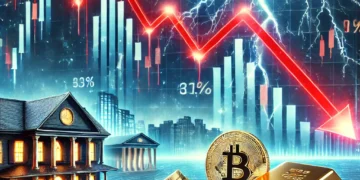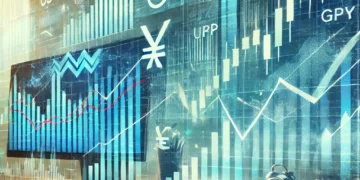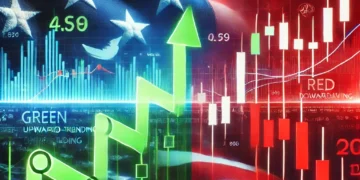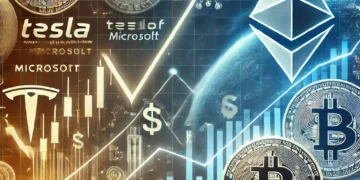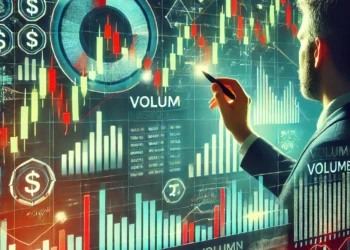Algorithmic trading, the use of computer algorithms to execute a large number of orders at extremely high speeds, has significantly transformed the landscape of financial markets. This automated trading methodology relies on complex mathematical models and formulas to make high-frequency trading decisions, taking advantage of small price differences or market inefficiencies. The impact of algorithmic trading on market liquidity and efficiency is profound, offering both enhancements and challenges to the modern trading environment. By automating the trading process, these algorithms can process vast amounts of data at speeds unattainable by human traders, executing trades based on pre-determined criteria such as timing, price, and volume with unparalleled precision.
The integration of algorithmic trading has contributed to increased market liquidity. By providing a continuous flow of buy and sell orders, these algorithms reduce the bid-ask spread, making it easier for transactions to occur without significantly impacting the market price. This liquidity is crucial for the smooth functioning of financial markets, allowing participants to enter and exit positions with minimal cost. Furthermore, algorithmic trading promotes market efficiency. The rapid execution of trades based on available information helps incorporate new data into asset prices more quickly, ensuring that prices reflect the true value of securities based on current knowledge.
However, the rise of algorithmic trading is not without its drawbacks. One of the primary concerns is the potential for market volatility. High-frequency trading strategies can lead to sudden and extreme price movements, as seen in events like the Flash Crash of 2010, where the Dow Jones Industrial Average briefly plummeted nearly 1,000 points before quickly recovering. Such incidents raise questions about the stability and resilience of markets dominated by automated trading systems. Additionally, there is a concern that algorithmic trading could exacerbate the divide between institutional investors and individual traders. The high cost of developing and maintaining sophisticated trading algorithms may give institutional investors an unfair advantage, potentially undermining the level playing field.
Algorithmic trading strategies harness complex algorithms to make trading decisions, often executing orders at speeds and frequencies that are impossible for human traders. These strategies range from basic to highly sophisticated and are used across various markets. Here are several prominent algorithmic trading strategies:
Trend Following Strategies: These involve algorithms designed to capture profits from sustained movements in price. They typically use technical indicators like moving averages, momentum oscillators, and breakouts to identify trends and execute trades accordingly.
Arbitrage Strategies: Arbitrage algorithms look for price discrepancies across different markets or related financial instruments and profit from the price differentials. Common examples include spatial arbitrage (same asset, different markets) and statistical arbitrage (different but historically correlated assets).
Market Making Strategies: Market-making algorithms aim to earn profits from the spread between the buy and sell prices by continuously placing limit orders on both sides of the market. These algorithms help provide liquidity, reducing the bid-ask spread for other market participants.
High-Frequency Trading (HFT): HFT strategies involve executing a large number of orders at extremely high speeds, often holding positions for just fractions of a second. These strategies leverage minor price movements and are heavily reliant on ultra-low latency trading infrastructure.
Sentiment Analysis Strategies: Utilizing natural language processing (NLP) and machine learning, these algorithms analyze news articles, social media feeds, and other textual data to gauge market sentiment and make trading decisions based on perceived public opinion.
Mean Reversion Strategies: Based on the theory that prices and returns eventually move back towards the mean or average, these strategies identify assets that have deviated significantly from their historical averages and trade on the assumption that they will revert to their long-term mean.
Volume-Weighted Average Price (VWAP) Strategies: VWAP algorithms break up a large order into smaller chunks and execute these orders throughout the day to match the volume-weighted average price, minimizing market impact.
Time-Weighted Average Price (TWAP) Strategies: Similar to VWAP, TWAP strategies aim to execute orders at the average price over a specified time frame, often used to minimize the market impact of large trades.
Pairs Trading: A form of statistical arbitrage, pairs trading involves identifying two historically correlated securities. When the correlation deviates, one security is bought while the other is sold short, betting that their prices will converge again.
Machine Learning Strategies: These involve algorithms that adapt and improve over time based on data analysis. Machine learning models can identify complex patterns and relationships in the market that are not apparent to human traders, making predictive trades based on this analysis.
Each of these strategies leverages the speed, accuracy, and data-processing capabilities of computers, offering unique advantages in the pursuit of profit. However, they also come with their own set of risks and challenges, including the need for advanced technical infrastructure, susceptibility to model overfitting, and regulatory scrutiny.
Pros of Algorithmic Trading:
- Increased Liquidity: Algorithmic trading contributes to a more liquid market, reducing the cost of trading and facilitating smoother price discovery.
- Enhanced Market Efficiency: By rapidly incorporating new information into prices, algorithmic trading helps ensure that securities are more accurately valued.
- Reduced Transaction Costs: Automated trading can lower the costs associated with executing trades, benefiting all market participants.
Cons of Algorithmic Trading:
- Potential for Increased Volatility: The rapid execution of large volumes of trades can lead to significant price swings, contributing to market instability.
- Risk of Flash Crashes: Automated trading systems can amplify errors or react unpredictably to market conditions, potentially triggering sudden market drops.
- Barrier to Entry for Individual Traders: The sophistication and expense of algorithmic trading systems may disadvantage individual traders, consolidating power among institutional investors.
Summary:
Algorithmic trading represents a double-edged sword in financial markets, offering the potential to enhance liquidity and efficiency while also posing risks to market stability and fairness. The speed and volume at which trades can be executed by algorithms improve the responsiveness of markets to new information, contributing to more accurate pricing of securities. However, the reliance on automated systems introduces vulnerabilities, as evidenced by incidents of increased volatility and flash crashes. As financial markets continue to evolve with technological advancements, the challenge lies in harnessing the benefits of algorithmic trading while mitigating its risks. Regulatory frameworks and market safeguards must adapt to ensure that the influence of algorithms contributes positively to market dynamics, maintaining a balance between efficiency and stability. The future of algorithmic trading and its impact on market efficiency will likely be shaped by ongoing innovations in technology, regulatory responses, and the continuous quest for a fair and efficient trading environment.


